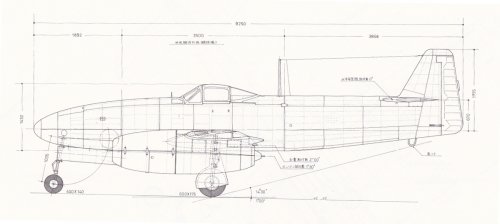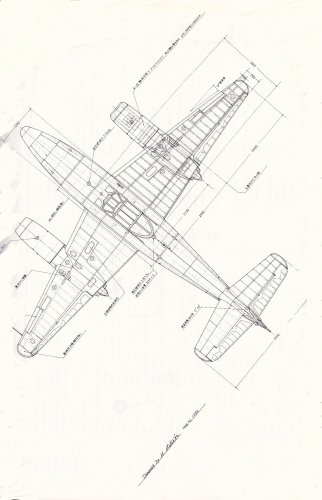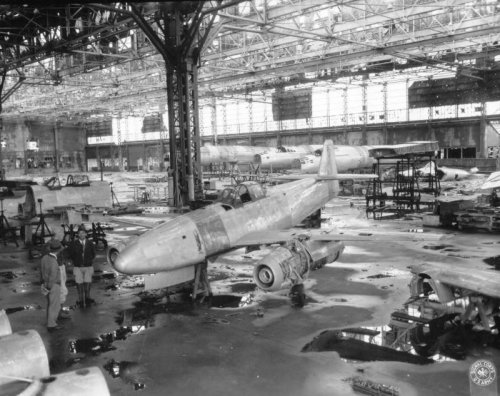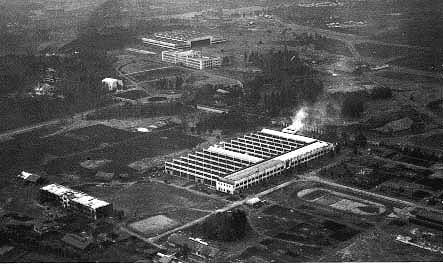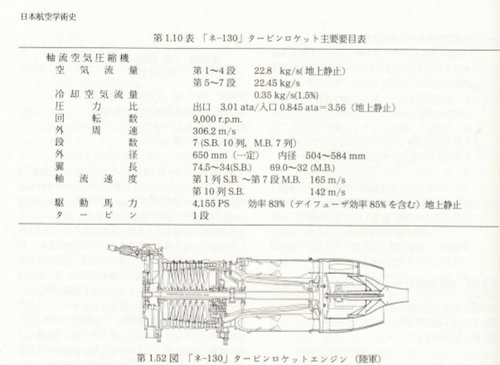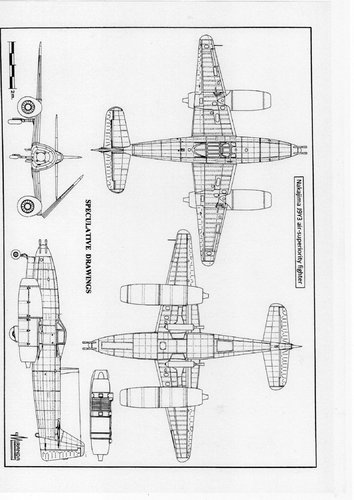Ki-201 "Karyu" was planned as the first jet of the Japanese Army. This aircraft, like the Navy Kikka, refers to the Messerschmitt Me262 fighter aircraft of allied Germany. Therefore, the basic shape of this unit is very similar to the Me 262, such as the fuselage cross section of the triangle, the wing suspension method of the twin-engine engine.
However,
the Karyu is one size larger compared with Me 262 on a scale, and Kikka is small oppositely. Kikka of the Navy does not equip any cannon from the planning stage (from the second prototype will be equipped with a fighter type and double-seat reconnaissance aircraft type), armed taking into account only anti-ship special attacks compared to the only bomb, The army Karyu was an air defense fighter to be tasked with intercepting boeing B-29 bomber of the United States army by four cannon sat on the only, and also serves as an assault aircraft to mission the raid of allied ships and ground troops in bombs and ta-bullet, It has been positioned as a combat assault aircraft.
Therefore, this machine is the first and last as a pure jet fighter that the Japanese army planned. Nakajima was in charge of the aircraft design, and the aircraft and engine were completed in 1945 and 20 th of the Showa era. Mass production was scheduled to start at the 21st production arsenal, and the first prototype was scheduled to produce 18 aircraft.
There are two types of engines, Hitachi Aircraft and Ishikawajima Aircraft Manufacturing Co., Ltd. were in charge, but they were not completed by the end of the war. In June 2015, a stainless steel jet engine believed to be a prototype was discovered on the International Christian University (ICU) campus, the site of nakajima airplane Mitaka Research Institute, and an investigation showed that the engine was scheduled to be mounted on a Karyu.
It was found that the possibility of ne-230" parts was high.
Karyu
Planned value (Ishikawajima Ne 130 equipment type)
Model applications: Special air defense fighters / combat assault aircraft
Design: Nakajima
Format: Low Wing
Crew: 1 (pilot)
Length: 11.50 m
Width: 13.70 m
Height: 4.05 m
Wing area: 25.00 m2
Weight: 7000 kg
Power: Ne 130 stationary thrust 908 kg ×2
Maximum speed: 852 km/h
Practical climb limit: 12,000 m
Range: 980 km
Armed: ho 5 20mm cannon × 2 (each 200 rounds mounted) Ho 155-II 30mm cannon (each 120 rounds mounted) × 2 500 kg bomb × 1 to 800 kg bomb × 1


